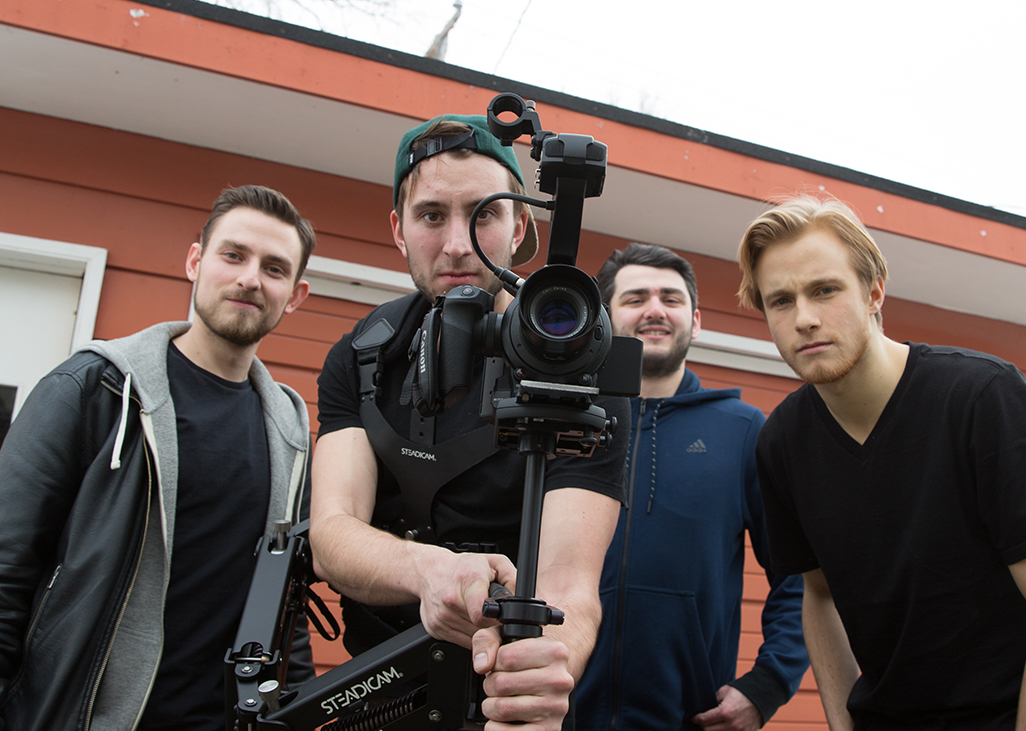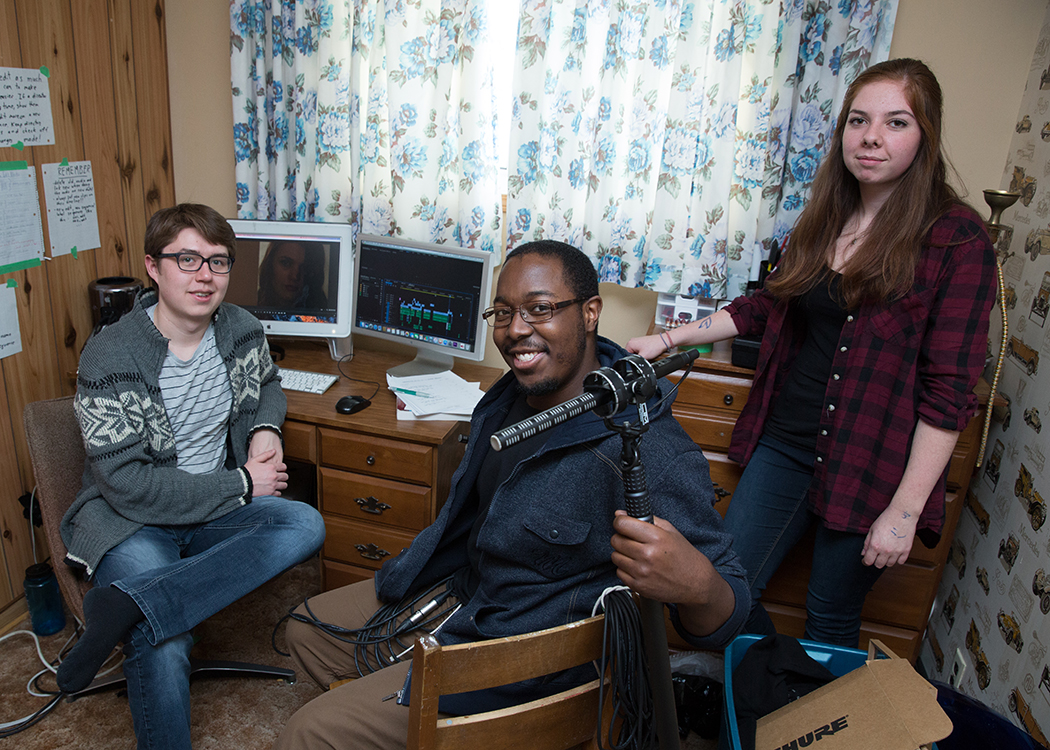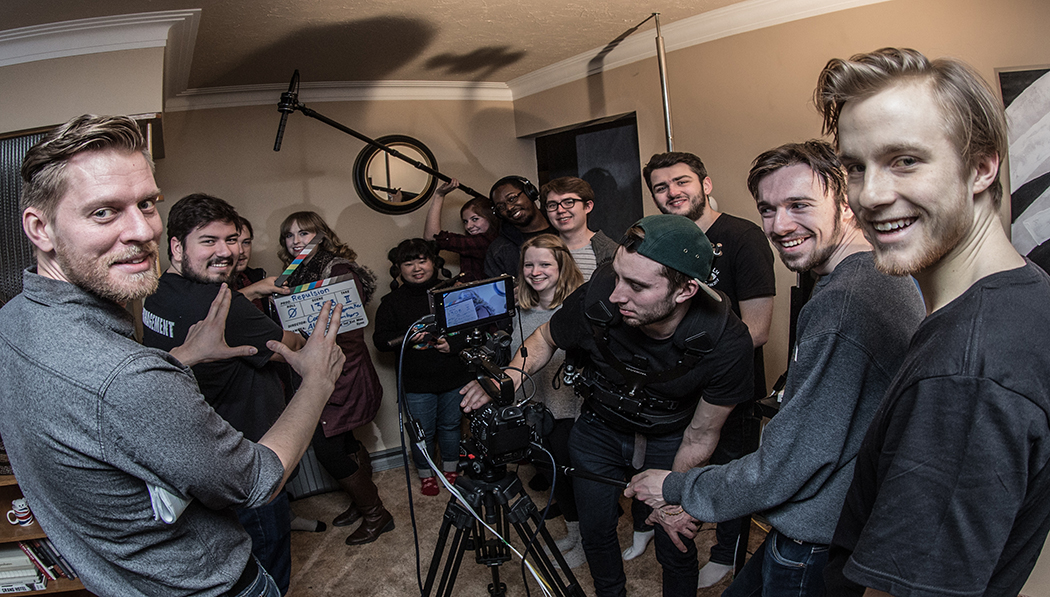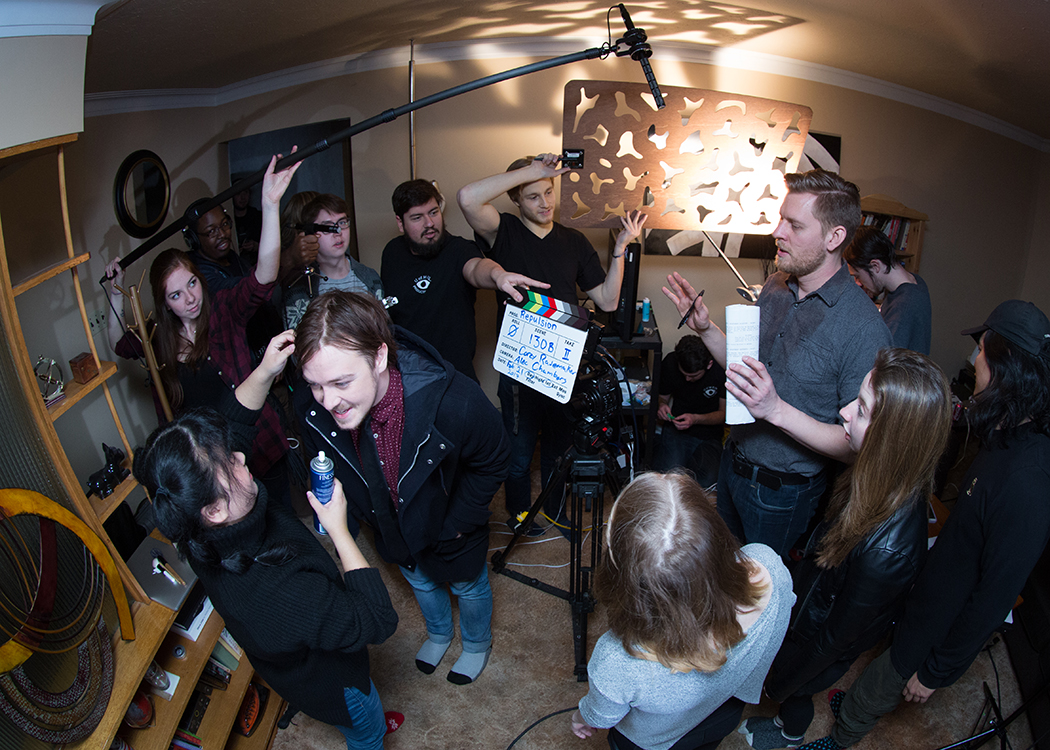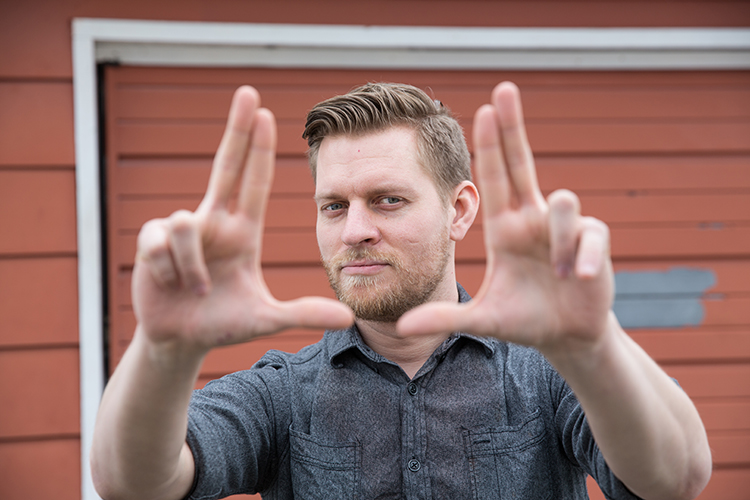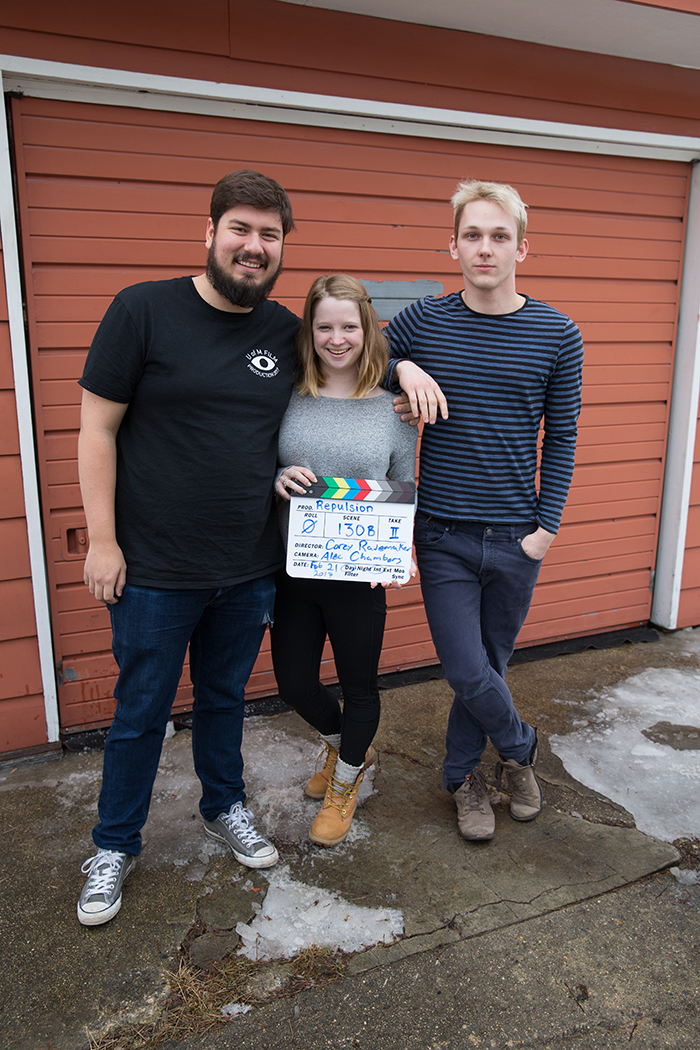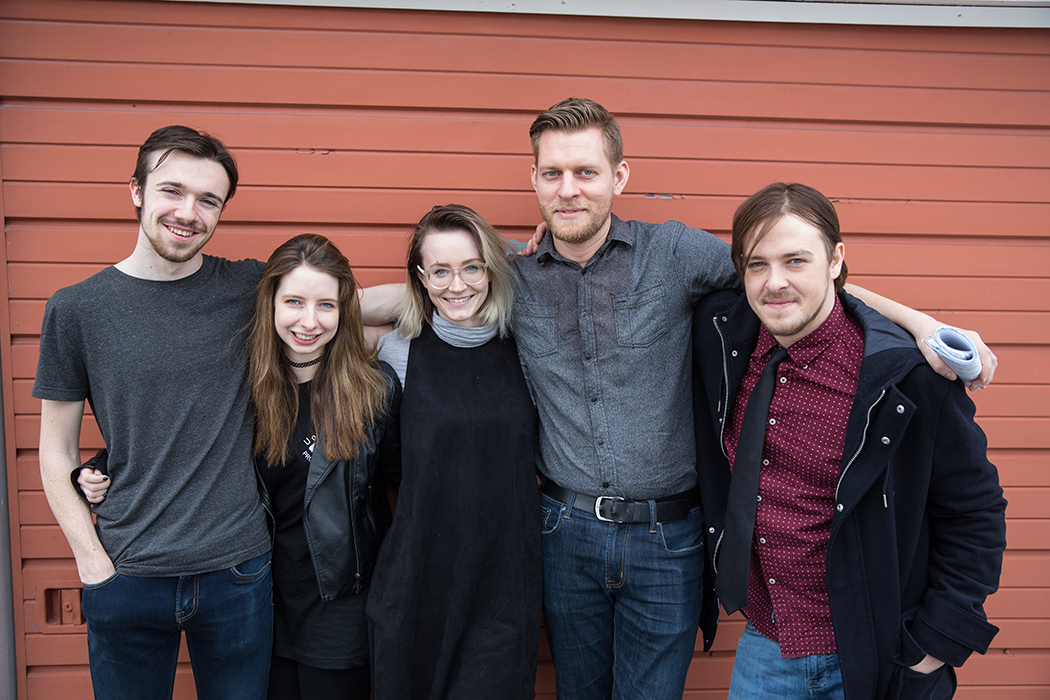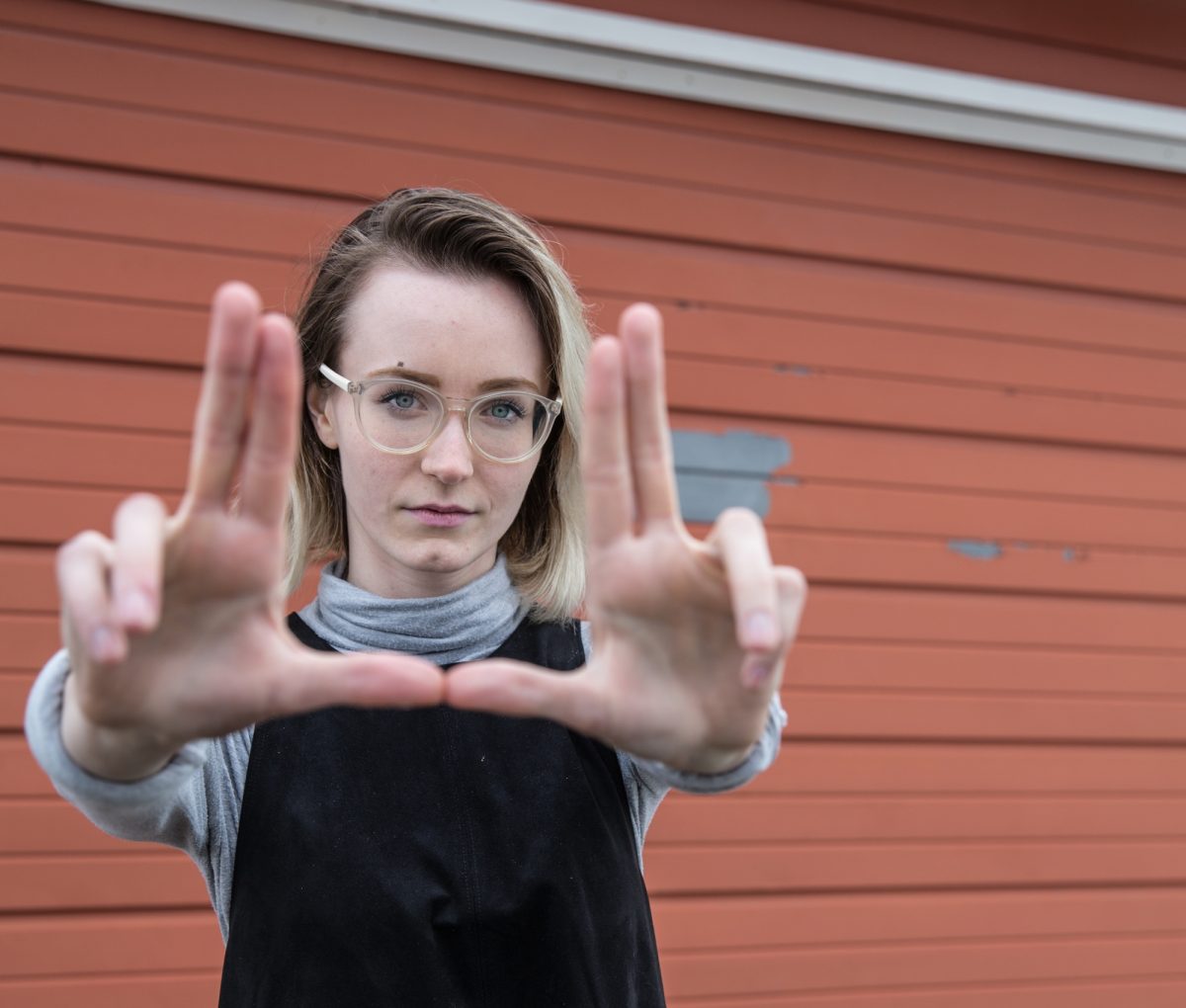
Student in the film production course. // All photos by Mike Latschislaw
4-3-2-1 action!
Collaborative teaching and learning in the spotlight
A U of M film production class trains students through collaborative learning and creation of a full-length feature film, a course opportunity unique across Canada.
Creative writer and English, film and theatre PhD candidate Kirsty Cameron brings us the inside scoop.

Kirsty Cameron.
IT IS THE BEGINNING OF OCTOBER and we are gathered in the media lab in University College.
A group of 23 students has been meeting since the school year began in September. Our current focus is deciding on the foundational story in the making of what will become a completed film, fully edited for viewing, ideally by spring. It’s going to be a busy eight months!
Last night, we finished our third creative writing workshop for the course, Film Production: Advanced Camera Acting, Directing, Script-writing, Production. The six credit-hour course, taught by film chair and distinguished professor George Toles, has been running in the University of Manitoba’s department of English, film, and theatre every two years for 13 years.
This is the seventh time the course has been offered to students who have at least completed the department’s introductory film course.
The course provides opportunities for students to learn a number of roles in filmmaking, with directorial, camera, management, art and technical positions. Some students will fill more than one position.
The task
I’m one of the co-facilitators of the writing workshop portion of the course, alongside teaching assistant and line producer Paymun Nematollahi and film student/through line coordinator Corey Rademaker.
The group’s task is to adapt an existing screenplay, crafting a personalized version of a shooting script of a little over 60 pages for a full-length feature film close to two hours running time. We will meet for three hours once a week into December, to hash out the intricacies.
The writing process entails a scene-by-scene working over and rewriting of a script according to the group’s story choices.
Of the students in our writing group, several will direct. The main actors and actresses are in the writing group. There are sound people and art people here and the student production manager will attend each writing session, too.

Paymun Nematollahi and Jim Agapito.
Paymun is a master of logistics and he’s set us up with a schedule of writing deadlines for each of the three acts of the screenplay, with a final deadline of December for the whole script, leaving room for on-set revisions later.
Three principal writers, led by head writer Corey, have stepped out of the larger group to become responsible for the writing of acts after our group discussions, returning every week with edited pages.
After shooting wraps at the end of March, producer Jim Agapito will guide the film editing process with a group of student-editors, using the tools in the media lab.
By next spring, every one of the students in the course will be a filmmaker.
Everything begins with the writing. Our workshops should be a place of conversations necessary for turning a script into a work of collective art.
The goal for this group of committed students is to experience the collaborative art of filmmaking to professional industry standards. By mid-winter, at least three people in the writer’s room will be screenwriters, with the whole group credited as writing assistants.
By next spring, every one of the students in the course will be a filmmaker.
FLASHBACK:
Early on, George starts a workshop session by prompting the group to consider ways to view and develop the film’s characters.
He brings Irvin Yalom’s Love’s Executioner: And Other Tales of Psychotherapy into the initial workshop session and reads passages from the psychotherapist’s tale of grappling, as writers must grapple in drafting characters, with psychological motivation, states of being and personal empathy in his relationships with his clients.
Yalom explains: “Even the most liberal system of psychiatric nomenclature does violence to the being of another. If we relate to people believing that we can categorize them, we will never identify nor nurture the parts, the vital parts, of the other that transcend category.”
The weeks of workshop discussions must be underscored by the questions: What are our tendencies as readers or viewers of film? Are we punishing in our orientation toward character? Do we tend to be forgiving? Can we avoid crass labelling or an oversimplification of characters? Can we treat our characters justly?
Read the rest of the story in the online issue of Teaching Life.







